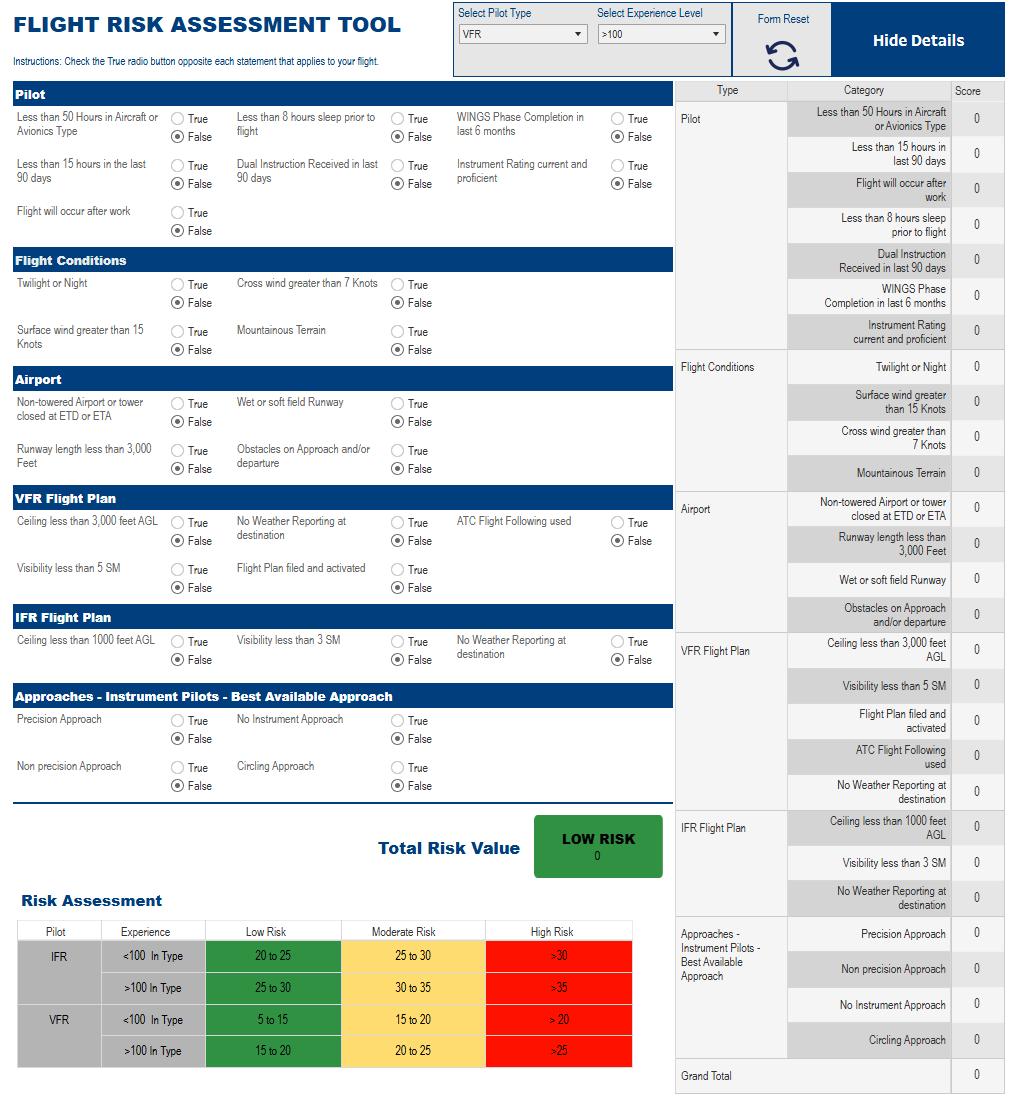The FAA Safety Team’s FRAT tool, like many other FRATs, produces a score that will fall within one of three risk categories: Green (low), yellow (medium), and red (high).
And an updated version of it was released in October of 2024.
Why is a FRAT tool necessary?
 Being “in the thick of it” is not the time to address a potentially dangerous situation. When preparing for a flight or maintenance operation, it’s crucial for operators and technicians to pause and consider the risks involved. Simply running through the task mentally often overlooks the actual risk exposure. The mind has a tendency to isolate individual risks, which can lead to an underestimation of their collective impact. Personal biases may also skew our risk assessment to align with our own objectives. To counteract these biases, it’s advisable to document the process. Writing it down helps set clear risk boundaries away from the pressures of an imminent flight or maintenance activity, offering a comprehensive view of the risks that is difficult to achieve mentally. Most importantly, it lays the groundwork for managing risks with proactive and recorded mitigation strategies.
Being “in the thick of it” is not the time to address a potentially dangerous situation. When preparing for a flight or maintenance operation, it’s crucial for operators and technicians to pause and consider the risks involved. Simply running through the task mentally often overlooks the actual risk exposure. The mind has a tendency to isolate individual risks, which can lead to an underestimation of their collective impact. Personal biases may also skew our risk assessment to align with our own objectives. To counteract these biases, it’s advisable to document the process. Writing it down helps set clear risk boundaries away from the pressures of an imminent flight or maintenance activity, offering a comprehensive view of the risks that is difficult to achieve mentally. Most importantly, it lays the groundwork for managing risks with proactive and recorded mitigation strategies.
Given that every flight carries some degree of risk, it’s vital for pilots to distinguish beforehand between low-risk and high-risk flights, establish a review process, and formulate strategies for risk mitigation. A FRAT facilitates proactive hazard recognition, is user-friendly, and provides a visual representation of risk levels. It serves as an essential aid in assisting pilots with informed go/no-go decisions and ought to be incorporated into every flight’s planning process.
Check out the FAA Safety Team’s
Flight Risk Assessment Tool (FRAT)
and start using it in your own flying or with
your students in training today by clicking here!